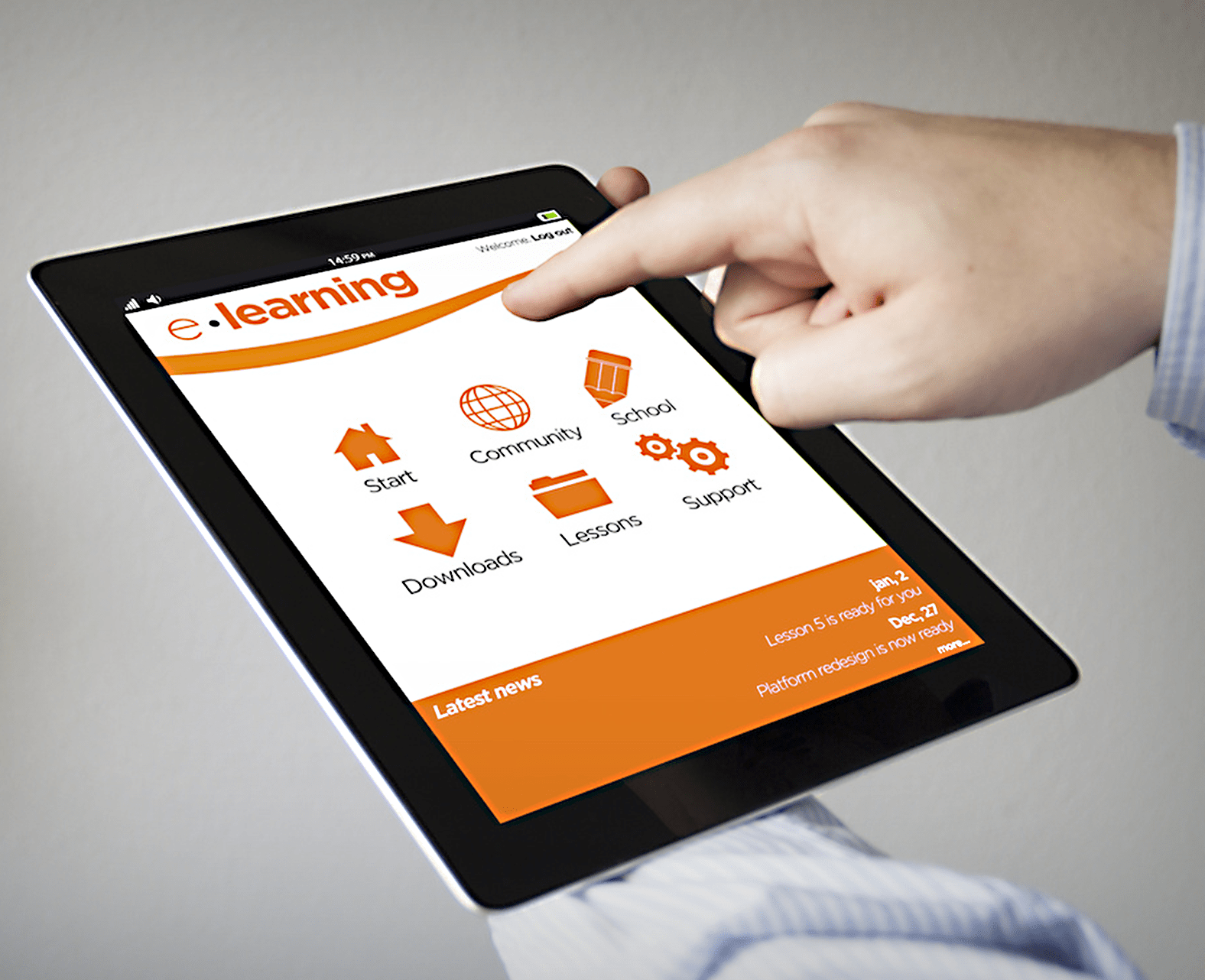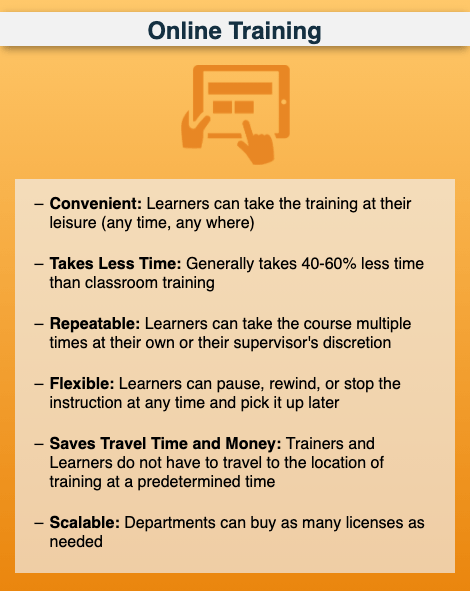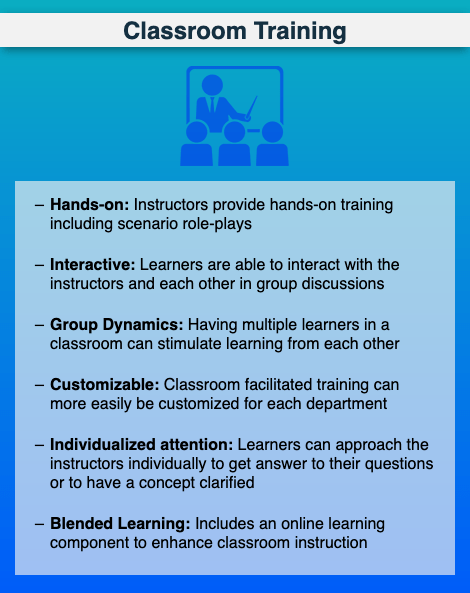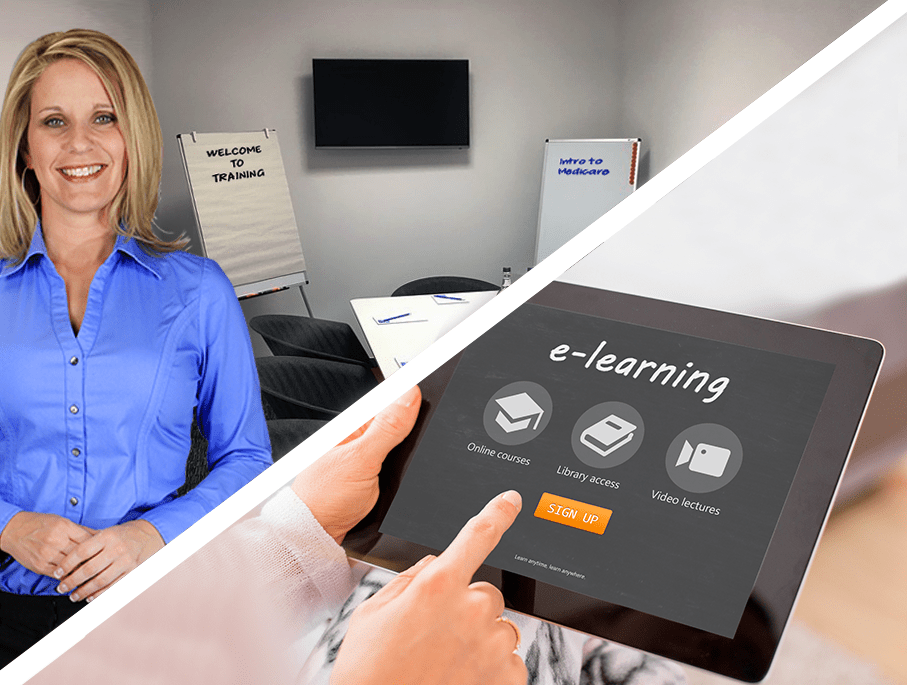Making instructional content available for individuals to complete on their own time provides many benefits. Since not all learners have the same background and previous experience with a given topic, some can go through training much faster than others.
Asynchronous learning allows those already experienced with the material to progress through the training more quickly. Those who need extra time can revisit the material at their discretion until mastery has been achieved.
Technology plays an important role in training delivery. Are you using it to your advantage?
eLearning, computer based training (CBT), online or mobile training—these are concepts where learning is aided or facilitated by technology. When and how should you use technology to deliver training?
We specialize in:

When Asynchronous Learning makes sense
Midsize to larger agencies usually start a number of new hires at the same time and send them through the same “goose step” training class to get them ready to hit the sales floor. Often, these agent come from a wide variety of backgrounds with varying experience in the industry.
Having experienced agents in the same training class as those who are fairy, if not completely, new to the industry may pose a challenge. You do not want to underwhelm one part of the class and overwhelm the other at the same time.
The Solution: The Solution: Asynchronous Learning!
Use online eLearning modules with built in knowledge assessments that new hires can take on their own. Some will go through the material more quickly than others. This frees up trainers to spend more time working with individual agents as they progress through the material. Once they master it, they are ready to graduate. Trainers can then focus more specifically on those who are less experiences and help them as they get ready to move into production.
Compare the different training methods below:


With “blended learning” the benefits of asynchronous online learning are combined with an instructor facilitated component. For example, training occurs part time in a classroom or virtual classroom setting and the rest of the time learners are completing online modules to either (a) supplement the classroom training or (b) to complete core courses on their computer or device and then have supplemental classroom training.
Benefits of combining online and live training:
Learners are able to spend as much time as needed with online coursework. Frequent touch points with a live-instructor are set up to reinforce learning.
Here is an interesting article about blended learning: Click


Proudly providing help to insurance agencies and individual agents since 2006.
Website Design by:
